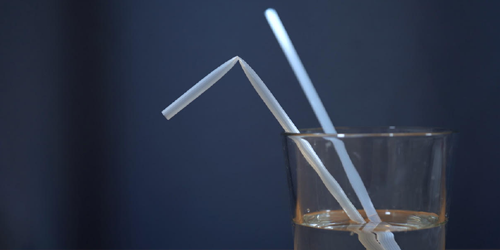Bending Hollow Rods Under High Pressure
Bend a straight drinking straw along its long axis and, as more torque is added, the straw will become increasingly curved before failing abruptly. This sudden failure occurs once the deformation gets concentrated in a small enough region of the straw, and it is driven by two distinct processes—the Brazier instability and the wrinkling instability. Now, Luyi Qiu and colleagues at Harvard University predict that triggering these instabilities in rod-shaped E. coli bacteria, for example, could provide a way to measure the internal fluid pressure of biological cells [1].
The strain behavior of tubes (hollow rods) is well studied because of its importance for infrastructure such as oil and gas pipelines. For these systems, which operate in the so-called shell regime, the pressure inside the tube has little impact on the tube’s stress response. Instead, the tube’s behavior depends primarily on its dimensions and on the properties of the material from which it is made. Qiu and her colleagues investigated the “balloon regime,” in which the tube’s internal pressure plays a significant role in determining its stress response, while the tube’s material properties are less important.
The researchers theoretically mapped out the strain behavior of a thin-walled, circular tube subjected to a range of bending forces and internal pressures. They found that the wrinkling instability, which manifests as periodic creases on the inside of the curved tube, was consistently reached before the Brazier instability, which is seen as a flattening of the tube’s cross section. They also found that the onset of both instabilities was delayed for higher internal pressures. The researchers suggest that they could use these instabilities to indirectly measure a cell’s internal pressure by changing the osmotic concentration of the cell’s environment until the instabilities are induced.
–Marric Stephens
Marric Stephens is a Corresponding Editor for Physics Magazine based in Bristol, UK.
References
- L. Qiu et al., “Bending instability of rod-shaped bacteria,” Phys. Rev. Lett. 128, 058101 (2022).




